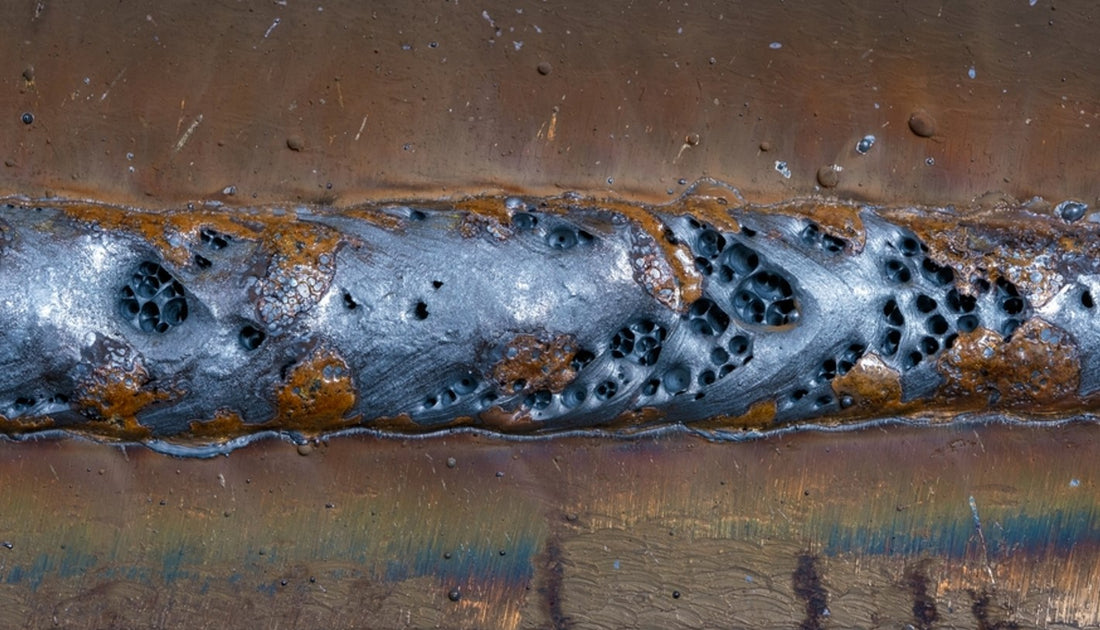Discover What is Porosity in Welding and Its Effect on Structural Integrity
Discover What is Porosity in Welding and Its Effect on Structural Integrity
Blog Article
Porosity in Welding: Identifying Common Issues and Implementing Best Practices for Avoidance
Porosity in welding is a prevalent issue that commonly goes undetected till it creates substantial troubles with the honesty of welds. This typical defect can compromise the toughness and longevity of bonded structures, posing safety and security dangers and resulting in costly rework. By recognizing the source of porosity and applying efficient prevention strategies, welders can dramatically enhance the quality and integrity of their welds. In this discussion, we will certainly check out the essential factors adding to porosity development, analyze its harmful effects on weld performance, and review the ideal methods that can be embraced to lessen porosity incident in welding procedures.
Common Reasons of Porosity

Another regular perpetrator behind porosity is the visibility of contaminants externally of the base steel, such as oil, grease, or rust. When these impurities are not efficiently eliminated prior to welding, they can evaporate and come to be entraped in the weld, triggering problems. Utilizing filthy or damp filler products can introduce contaminations right into the weld, contributing to porosity issues. To minimize these typical root causes of porosity, comprehensive cleaning of base steels, proper protecting gas option, and adherence to optimal welding parameters are essential techniques in attaining high-grade, porosity-free welds.
Influence of Porosity on Weld Quality

The visibility of porosity in welding can substantially compromise the structural integrity and mechanical homes of bonded joints. Porosity creates voids within the weld steel, compromising its overall stamina and load-bearing capability.
One of the key effects of porosity is a decline in the weld's ductility and toughness. Welds with high porosity degrees often tend to display lower impact stamina and decreased capacity to flaw plastically before fracturing. This can be specifically concerning in applications where the bonded parts go through vibrant or cyclic loading conditions. Porosity can hinder the weld's ability to effectively transmit pressures, leading to premature weld failure and prospective safety and security hazards in vital structures. What is Porosity.
Finest Practices for Porosity Avoidance
To enhance the architectural stability and high quality of bonded joints, what specific measures can be executed to lessen the event of porosity during the welding process? Utilizing the appropriate welding technique for the certain product being bonded, such as adjusting the welding angle and gun placement, can even more protect against porosity. Normal assessment of welds and prompt removal of any kind of concerns recognized throughout the welding procedure are important methods to protect against porosity and generate premium welds.
Relevance of Correct Welding Techniques
Applying appropriate welding techniques is critical in ensuring the architectural honesty and top quality of bonded joints, developing upon the foundation of effective porosity prevention steps. Too much heat can lead to boosted imp source porosity due to the entrapment of gases in the weld pool. In addition, utilizing the ideal welding specifications, such as voltage, current, and take a trip speed, is vital for achieving audio welds with very little porosity.
Moreover, the selection of welding process, whether it be MIG, TIG, or stick welding, should line up with the certain demands of the job to guarantee ideal results. Correct cleaning and preparation of the base steel, as well as selecting the best filler product, are likewise important parts of skillful welding strategies. By adhering to these best methods, welders can lessen the threat of porosity development and produce top quality, structurally sound welds.

Evaluating and Top Quality Control Procedures
Quality assurance steps play an important role in confirming the stability and reliability of bonded joints. Evaluating treatments are vital to detect and avoid porosity in welding, guaranteeing the toughness and resilience of the end product. Non-destructive testing methods such as ultrasonic testing, radiographic screening, Related Site and visual inspection are typically used to identify potential issues like porosity. These techniques permit for the evaluation of weld high quality without compromising the integrity of the joint. address What is Porosity.
Performing pre-weld and post-weld assessments is also essential in preserving top quality control standards. Pre-weld examinations involve verifying the products, equipment setups, and cleanliness of the workspace to avoid contamination. Post-weld evaluations, on the various other hand, analyze the final weld for any problems, consisting of porosity, and validate that it satisfies specified standards. Implementing an extensive top quality control plan that includes thorough testing treatments and examinations is extremely important to decreasing porosity problems and making certain the overall high quality of bonded joints.
Verdict
Finally, porosity in welding can be a typical problem that impacts the top quality of welds. By recognizing the usual reasons for porosity and applying finest methods for prevention, such as appropriate welding strategies and screening actions, welders can make sure high quality and trusted welds. It is important to prioritize avoidance techniques to minimize the event of porosity and preserve the stability of welded structures.
Report this page